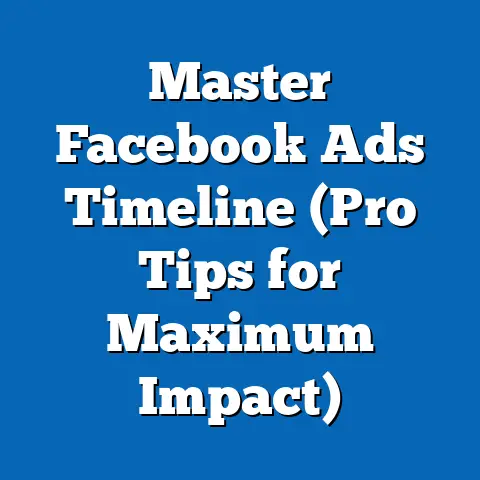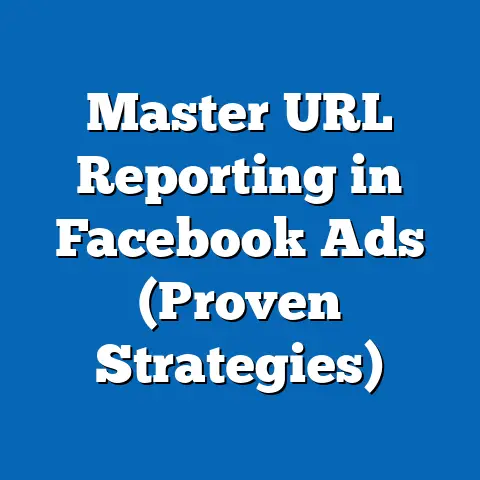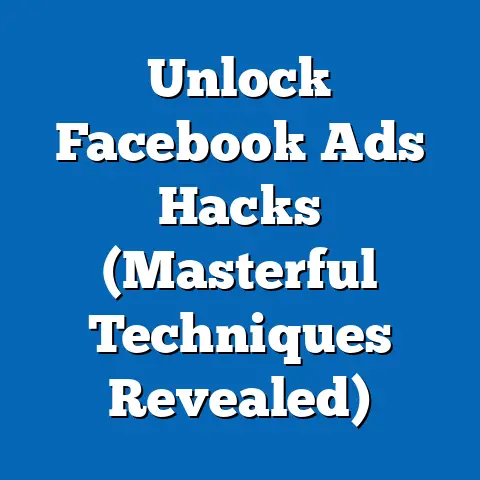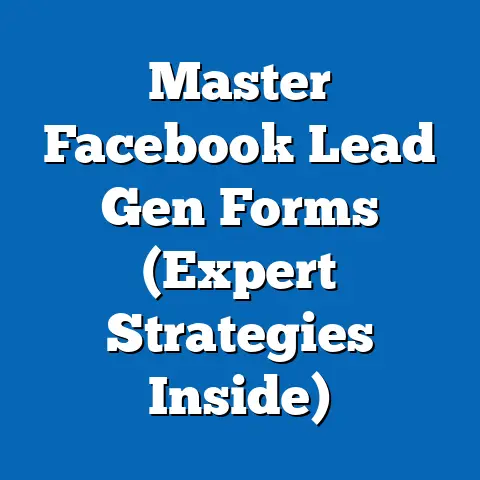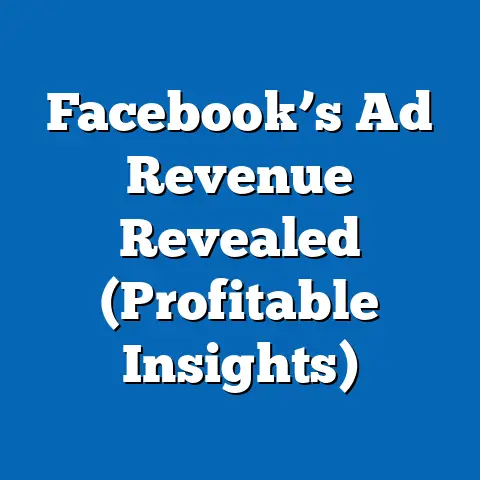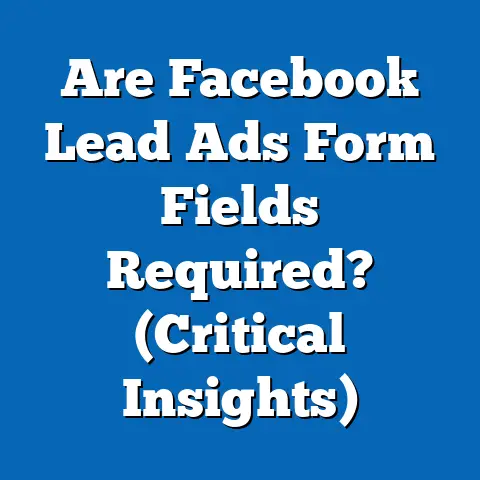Combat fb ad Blocking on Chrome (Proven Strategies Inside)
Combat FB Ad Blocking on Chrome: Proven Strategies Inside
Have you ever launched a Facebook ad campaign, meticulously crafted with the perfect visuals and compelling copy, only to wonder if it’s truly reaching your intended audience? In today’s digital landscape, a significant portion of potential customers are shielded from ads by ad blockers, particularly on Google Chrome. This reality poses a considerable challenge for businesses that rely on Facebook advertising to drive growth. The question then becomes: How can we, as marketers and business owners, navigate this terrain and ensure our message still breaks through?
Facebook ads are a cornerstone of modern marketing, providing unparalleled reach and targeting capabilities. However, the rise of ad blockers, especially on Chrome, presents a significant hurdle. These tools filter out ads, preventing them from being displayed to users, thus impacting the effectiveness of advertising campaigns.
In this guide, I’ll share proven strategies to combat ad blocking on Chrome, drawing from my own experiences and insights in the field. We’ll explore how to craft engaging ads, leverage alternative formats, implement native advertising, build strong brand communities, and utilize email marketing and retargeting to mitigate the impact of ad blockers. Let’s get started!
Understanding the Ad Blocking Landscape
Ad blockers are software tools or browser extensions designed to prevent advertisements from appearing on web pages. They work by identifying and blocking elements that are recognized as ads, such as banner ads, pop-ups, and video ads. On Chrome, ad blockers are readily available as extensions that users can easily install and activate.
According to recent statistics, ad blocking is a widespread phenomenon among Facebook users. A significant percentage of individuals use ad blockers on their browsers, resulting in a substantial portion of the audience not seeing the intended ads. This has a direct impact on ad performance metrics such as reach, impressions, and click-through rates (CTR).
The reasons behind users choosing to install ad blockers are varied but often stem from concerns about user experience and privacy. Many users find ads intrusive, disruptive, and annoying, leading them to seek out tools that eliminate these distractions. Additionally, concerns about data privacy and tracking have fueled the adoption of ad blockers as a means to protect personal information.
For advertisers and small businesses that rely on Facebook ads for revenue, ad blocking presents a significant challenge. It reduces the effectiveness of advertising campaigns, potentially leading to lower conversion rates and decreased return on investment (ROI).
Takeaway: Ad blocking is a prevalent issue that affects Facebook advertising performance. Understanding the reasons behind its adoption is crucial for developing effective strategies to combat it.
Proven Strategies to Combat Ad Blocking
Now, let’s get into the meat of the matter – the strategies I’ve personally found effective in navigating the ad-blocking landscape. These aren’t just theoretical concepts; they’re techniques I’ve honed through trial and error, observation, and a healthy dose of adaptation.
Strategy 1: Crafting Engaging and Relevant Ads
The first line of defense against ad blockers is creating ads that resonate with the target audience. Ads that are perceived as intrusive, irrelevant, or annoying are more likely to be blocked. By focusing on creating engaging and relevant content, you can increase the chances of your ads being seen and appreciated.
Why it works: Ad blockers often rely on algorithms to identify and block ads based on certain characteristics. Ads that are perceived as high-quality and relevant are less likely to trigger these algorithms.
How to implement:
- Know your audience: Conduct thorough research to understand your target audience’s interests, needs, and pain points.
- Create compelling copy: Write ad copy that is clear, concise, and relevant to the audience. Highlight the benefits of your product or service and address their specific needs.
- Use high-quality visuals: Use eye-catching images or videos that are relevant to your ad copy. Avoid using generic stock photos that look out of place.
- Test different ad variations: Experiment with different ad formats, copy, and visuals to see what resonates best with your audience.
- Personalize your ads: Use dynamic creative optimization (DCO) to personalize your ads based on the user’s interests, demographics, and behavior.
Example: I once worked with a local coffee shop that was struggling to attract new customers. Instead of running generic ads promoting their coffee, we created a series of ads that highlighted the unique aspects of their shop, such as their cozy atmosphere, locally sourced ingredients, and community involvement. These ads resonated with the target audience, resulting in a significant increase in foot traffic and sales.
Strategy 2: Utilizing Alternative Ad Formats
Traditional banner ads are often the first to be blocked by ad blockers. By utilizing alternative ad formats such as video ads, carousel ads, and sponsored posts, you can bypass ad blockers and reach a wider audience.
Why it works: Alternative ad formats are often less likely to be blocked because they are perceived as less intrusive and more engaging.
How to implement:
- Video ads: Create short, engaging videos that showcase your product or service. Use storytelling to capture the audience’s attention and convey your message effectively.
- Carousel ads: Use carousel ads to showcase multiple products or services in a single ad. This format is ideal for e-commerce businesses that want to promote a variety of items.
- Sponsored posts: Create sponsored posts that blend seamlessly with organic content. These posts should be informative, entertaining, and relevant to the audience.
Example: A client of mine, a clothing retailer, saw a significant increase in engagement and sales after switching from traditional banner ads to carousel ads. By showcasing multiple items in a single ad, they were able to capture the attention of a wider audience and drive more traffic to their website.
Strategy 3: Implementing Native Advertising
Native advertising is a form of advertising that blends seamlessly with the content of the platform on which it appears. Native ads are designed to look and feel like organic content, making them less likely to be blocked by ad blockers.
Why it works: Native ads are perceived as less intrusive and more relevant than traditional ads, making them less likely to be blocked.
How to implement:
- Create content that is relevant to the audience: Focus on creating content that is informative, entertaining, and relevant to the audience’s interests.
- Blend seamlessly with the platform: Ensure that your native ads look and feel like organic content. Avoid using overly promotional language or imagery.
- Disclose that it’s an ad: Be transparent about the fact that your content is sponsored. This will help build trust with the audience and avoid being perceived as deceptive.
Example: I once worked with a tech company that wanted to promote their new software. Instead of running traditional ads, we created a series of blog posts that addressed common pain points in the industry and positioned their software as a solution. These blog posts were published on industry-related websites and promoted on social media, resulting in a significant increase in brand awareness and leads.
Strategy 4: Building a Strong Brand Community
Building a strong brand community can enhance organic reach and reduce reliance on paid ads. By fostering a loyal community around your brand, you can increase the chances of your content being seen and shared organically.
Why it works: When users are part of a brand community, they are more likely to engage with your content and share it with their friends and followers. This can significantly increase your organic reach and reduce your reliance on paid ads.
How to implement:
- Create a Facebook group: Create a Facebook group where your followers can connect with each other and discuss topics related to your brand.
- Engage with your followers: Respond to comments and messages promptly and engage in conversations with your followers.
- Create interactive content: Create polls, quizzes, and contests that encourage your followers to participate and share their opinions.
- Offer exclusive content: Provide exclusive content and discounts to your Facebook group members.
Example: A local bookstore I consulted with created a Facebook group for book lovers in their community. They regularly posted book recommendations, hosted author Q&As, and offered exclusive discounts to group members. This resulted in a highly engaged community that drove significant traffic to their store.
Strategy 5: Leveraging Email Marketing and Retargeting
Combining Facebook ads with email marketing can mitigate the impact of ad blockers. By building an email list, you can reach your audience directly, regardless of whether they are using an ad blocker.
Why it works: Email marketing allows you to reach your audience directly, bypassing ad blockers altogether. Retargeting allows you to focus your ads on users who have already interacted with your brand, increasing the chances of conversion.
How to implement:
- Build an email list: Offer a free ebook, discount, or other incentive in exchange for email addresses.
- Segment your email list: Segment your email list based on demographics, interests, and behavior.
- Create targeted email campaigns: Create email campaigns that are tailored to the specific segments of your email list.
- Use retargeting: Retarget users who have visited your website or interacted with your ads on Facebook.
Example: An e-commerce client of mine saw a significant increase in sales after implementing a combined email marketing and retargeting strategy. By offering a discount to new email subscribers and retargeting website visitors with relevant ads, they were able to increase their conversion rates and drive more revenue.
Takeaway: Implementing a combination of these strategies can significantly reduce the impact of ad blocking on your Facebook advertising campaigns. By focusing on creating engaging content, utilizing alternative ad formats, building a strong brand community, and leveraging email marketing and retargeting, you can reach a wider audience and drive better results.
Ethical Considerations and Best Practices
As marketers, it’s crucial to remember that our goal is to connect with our audience in a meaningful way, not to bombard them with intrusive ads. There’s a fine line between effective advertising and intrusive marketing, and it’s important to stay on the right side of that line.
Respect user preferences: Users have the right to choose whether or not they want to see ads. Respect their decision and avoid using tactics that circumvent ad blockers without their consent.
Be transparent: Be transparent about the fact that your content is sponsored. This will help build trust with the audience and avoid being perceived as deceptive.
Provide value: Focus on providing value to the audience. Create content that is informative, entertaining, and relevant to their interests.
Avoid intrusive tactics: Avoid using tactics such as pop-up ads, autoplay videos, and overly promotional language.
Takeaway: Ethical advertising is not only the right thing to do, but it’s also the most effective way to build trust with your audience and achieve long-term success.
Conclusion
Ad blocking is a challenge, but it’s not insurmountable. By implementing the strategies outlined in this guide, you can mitigate the impact of ad blockers on your Facebook advertising campaigns and reach a wider audience.
Remember, the key is to focus on creating engaging and relevant content that resonates with your target audience. By providing value and respecting user preferences, you can build trust and achieve long-term success.
The world of advertising is constantly evolving, and ad blocking is just one of the many challenges we face. By staying informed, adapting to change, and focusing on ethical practices, we can continue to connect with our audience and drive meaningful results.
So, what are your thoughts? What strategies have you found effective in combating ad blocking? Share your experiences in the comments below! Let’s learn from each other and navigate this ever-changing landscape together.

